

Working in Praat
Recording, opening and saving sound files
Joseph V. Casillas, PhD
About Praat
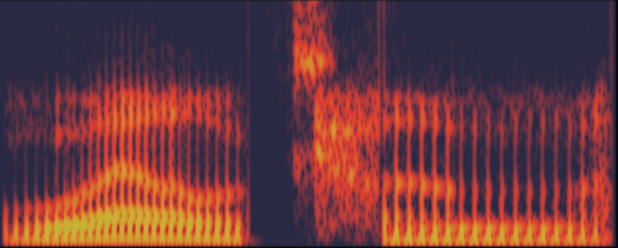
- Praat is a free, cross-platform program used in linguistics for
- speech analysis, synthesis, and manipulation
- labeling and segmentation
- listening experiments
- statistics
- Download here
Overview

In this tutorial you will learn about:
- the Praat interface
- objects
- spectrograms/waveforms
You will also learn how to:
- record sound objects
- view and reproduce sound objects
- import sound files
- save sound files
The Praat interface
The Praat interface
Upon opening Praat, you should see two windows:

- Praat Objects: (left) the window where objects are stored, accessed, and manipulated
- Praat Picture: (right) the window where graphing outputs are displayed
- We will mainly work in Praat Objects (you can close Praat Picture if you want)
- Notice there is not a lot going on without any objects
Record a sound object

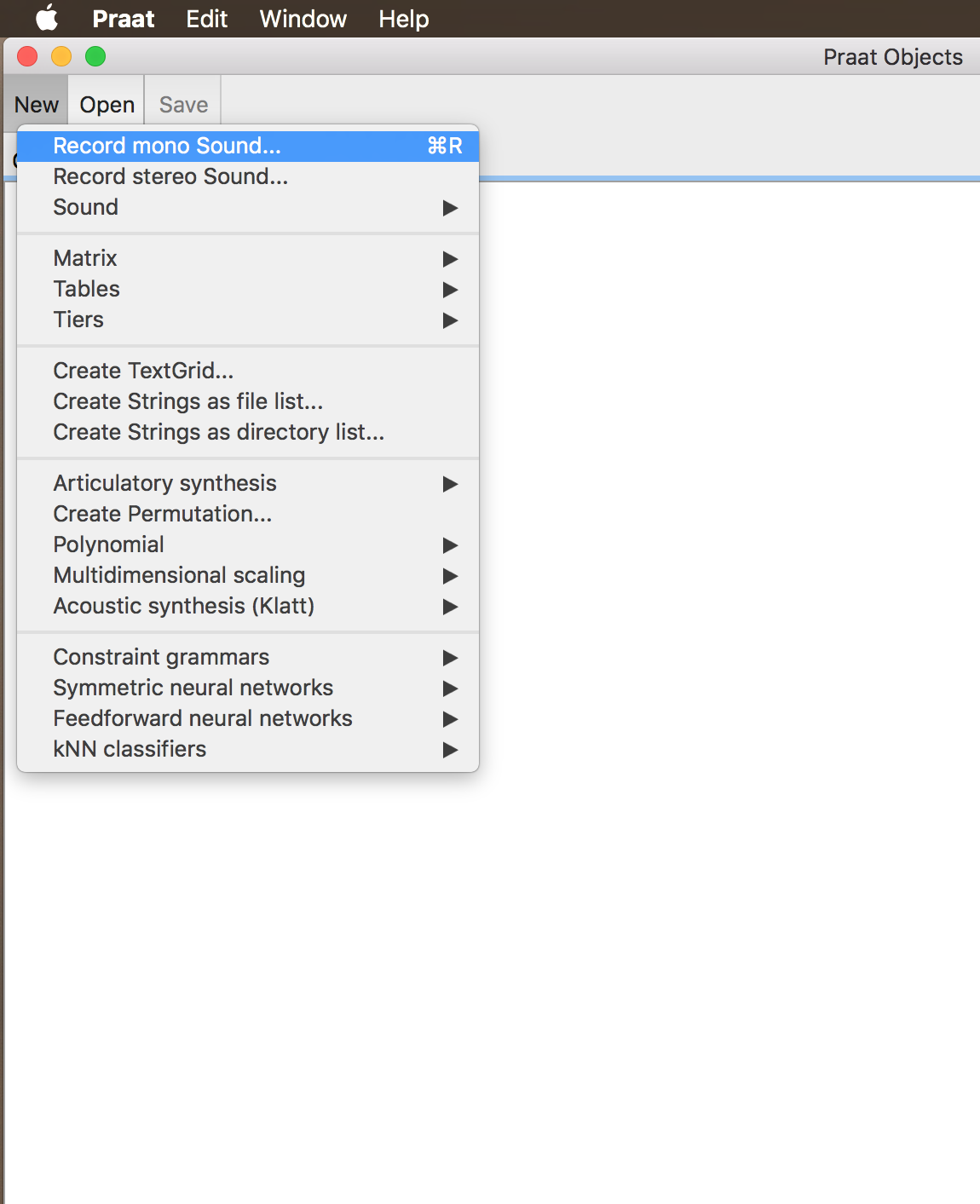
In order to record a sound object you must have an internal microphone or
you must connect a microphone to your computer
- To record a sound object:
- Go to the Praat Object window
- Click
New>Record mono Sound
- A SoundRecorder window will appear
SoundRecorder
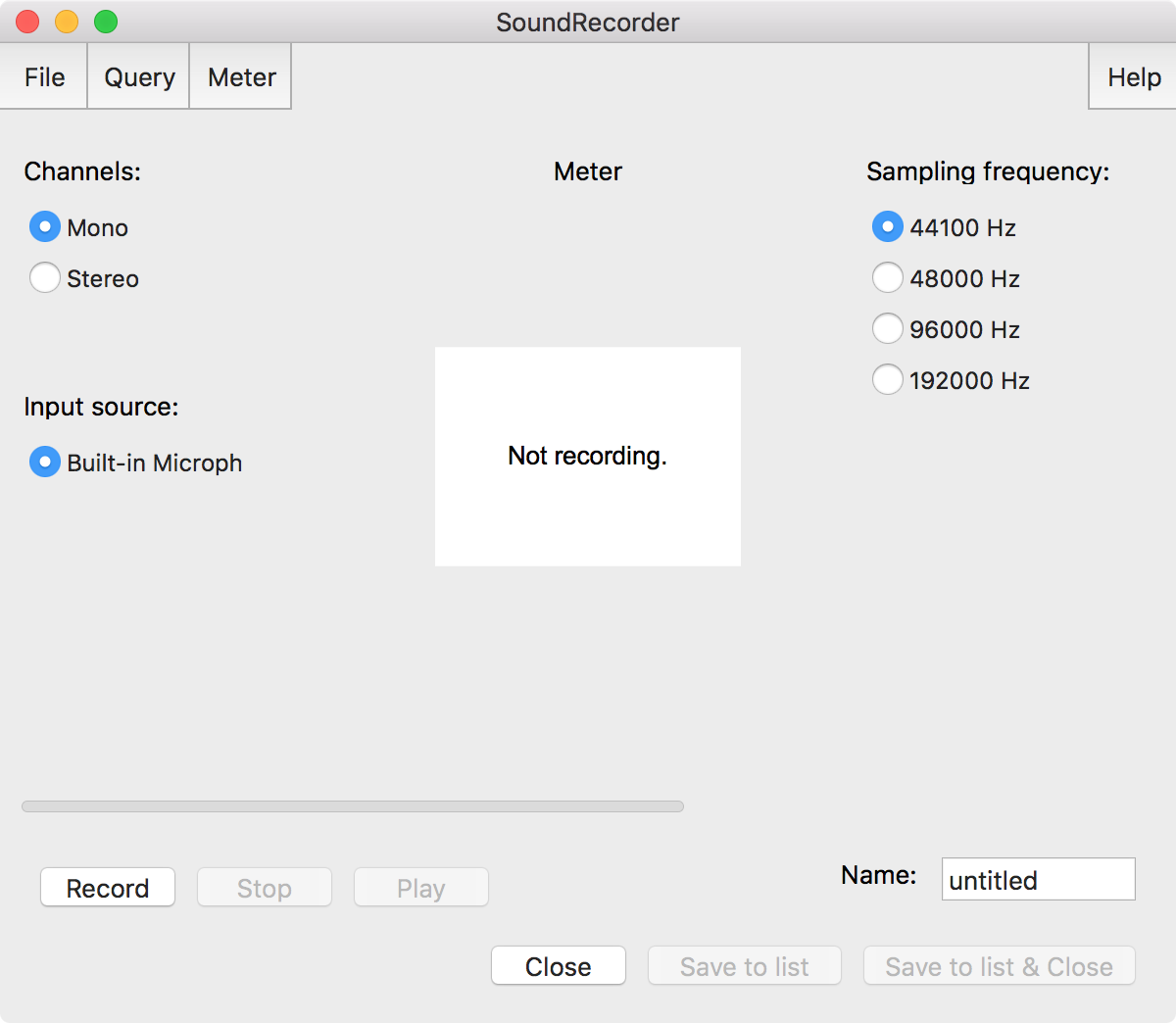
SoundRecorder


From this window you can:
- Choose...
- Channels (
mono/stereo) - Input source (
Built-in Microphone) - Sampling frequency (
44100 Hz)
- Channels (
- Record, Stop, and Play speech
- Name the object (default is 'Untitled')
SoundRecorder


Record a sound object
- Use
RecordandStopto record some speech - Use
Playto listen to your recording - Repeat until you are satisfied
- Give your recording a name (ex. 'test1') and then choose
Save to list & Close
- The recording will appear in the Object window
Objects
Sound objects


- You have created a
Sound object, which now appears in the Praat Objects window, under the headingObjects - Notice that Praat gives the object a number and tells you what kind of object it is:
1. Sound test1 - Also notice that there is now a long menu of options on the right
- Praat has many types of objects, each of which have different options in their
respective menus (these are the options that correspond
with sound objects)
- Click
View & Editto create a spectrogram of the Sound object
Spectrograms and waveforms
Spectrograms and waveforms


- You should see something similar to the image on the right
- The figure is divided into two parts:
- waveform/oscillogram (top):
two dimension display of sound pressure over time - spectrogram (bottom):
three dimension display of amplitude (vertical axis) and frequency (darkness) over time.
- waveform/oscillogram (top):
- You can reproduce the recording by pressing the
tabkey, and stop the recording by pressingtabagain. - You can use either the waveform or the spectrogram
to select portions of the recording - Select a portion and listen to it
Spectrograms and waveforms

View options
in: zoom inout: zoom outsel: zoom in on a selected area (must select area first)bak: return to previous viewall: zoom all the way out (show entire duration of sound object)
Saving and importing sound files
Save a sound object

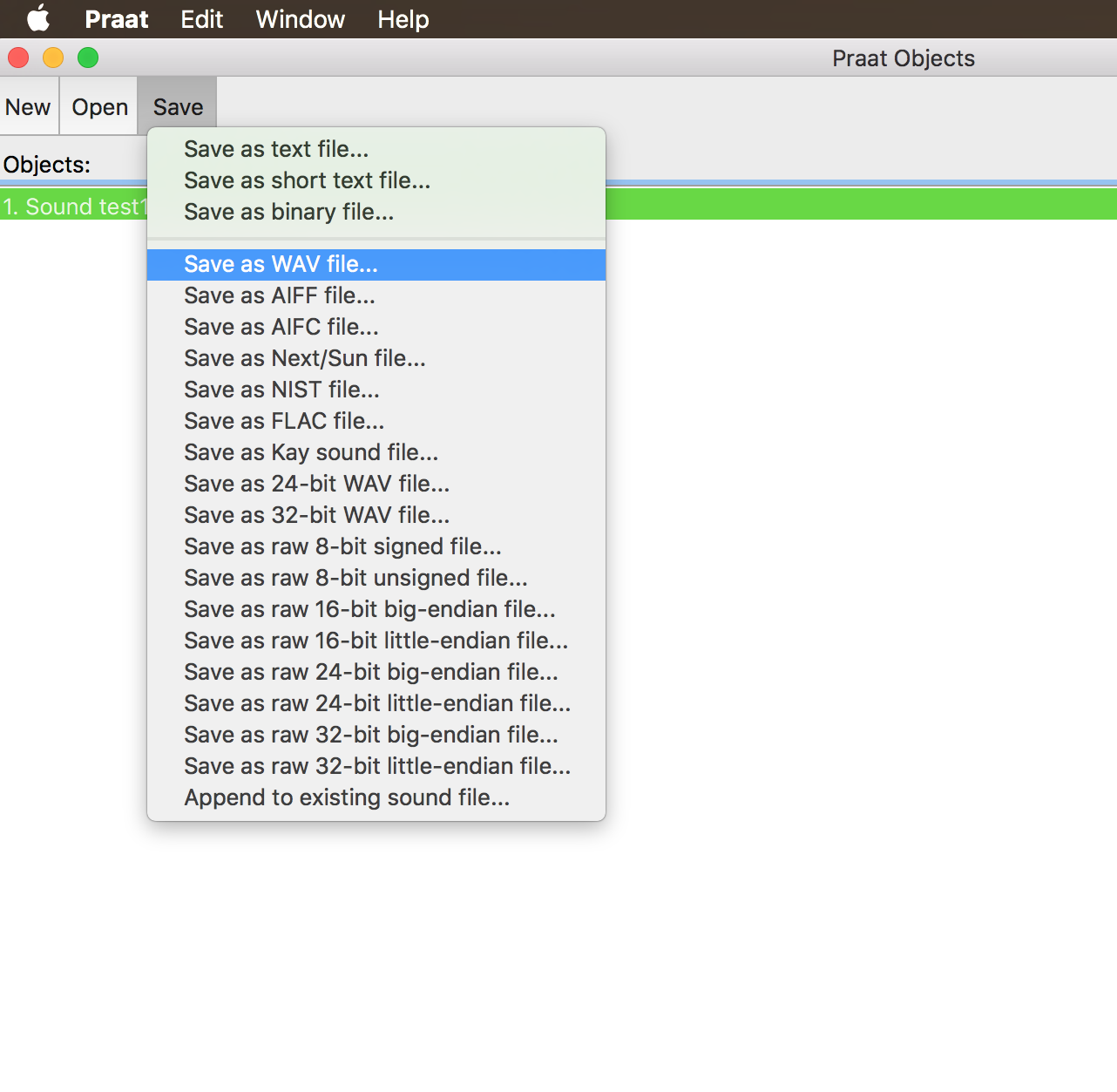
- Saving a sound object to your computer is easy
- In the Praat Objects window, highlight the object you would like to save
- Click the
Savetab - Select the format you would like (we will typically use .WAV files)
- Another window will pop-up in which you can name the file, as well as specify the directory to which it will be saved
- If you already have sound files to work with...
Importing sound files

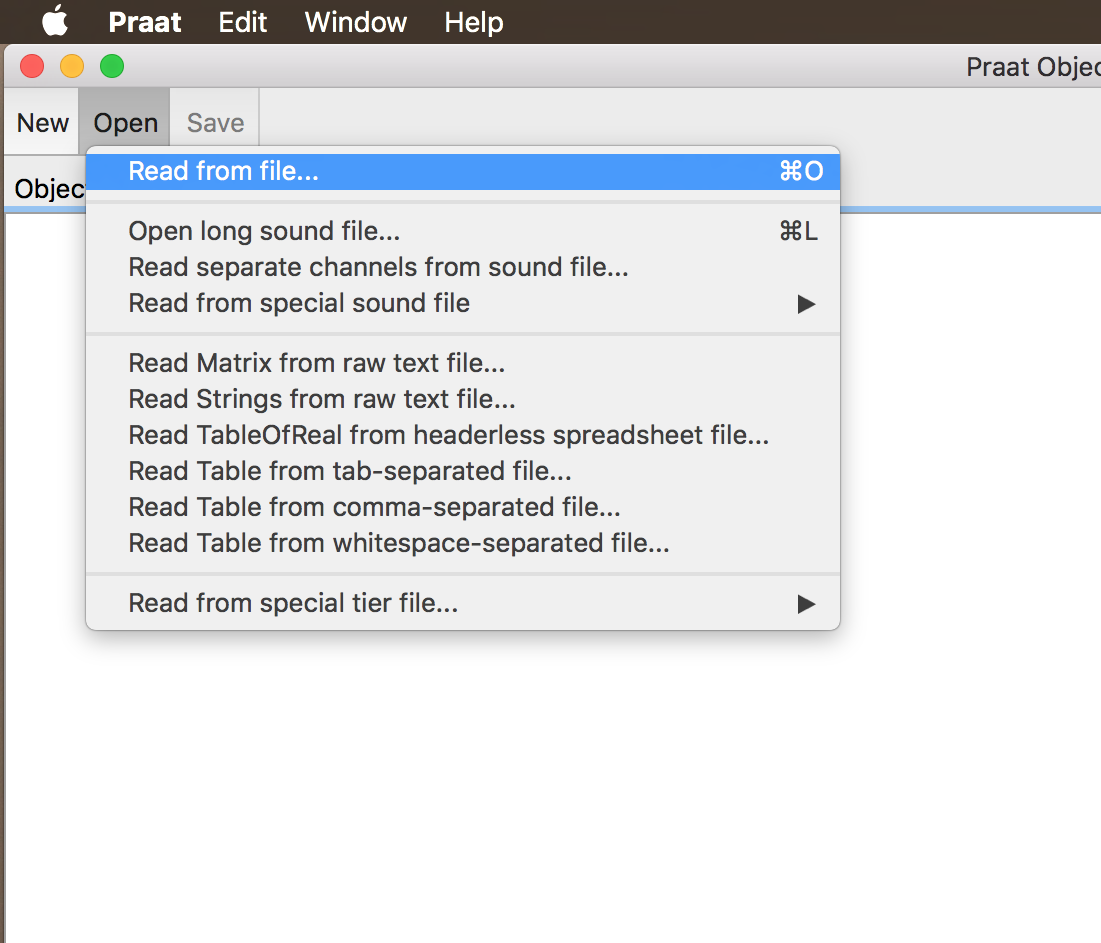
- Importing a sound file from your computer is equally easy
- In the Praat Objects window click the
Opentab - Select
Read from file... - Another window will pop-up in which you can find your sound file
and select
Open - The file will then appear as a sound object in the
Objectssection of the Praat Objects window
- Download the following sound file to your computer, open it in Praat and create a spectrogram (paper.wav)
Conclusion


In this short tutorial you learned about:
- the Praat interface
- objects
- spectrograms/waveforms
and now you are able to:
- record sound objects
- view and reproduce sound objects
- import sound files
- save sound files
Additional help
- Try another praat tutorial
- Email me (joseph.casillas@rutgers.edu)
References
- ref